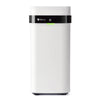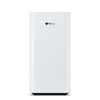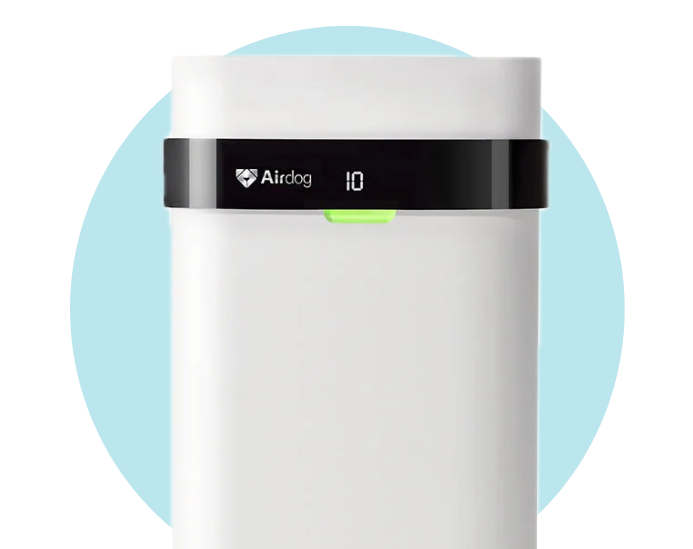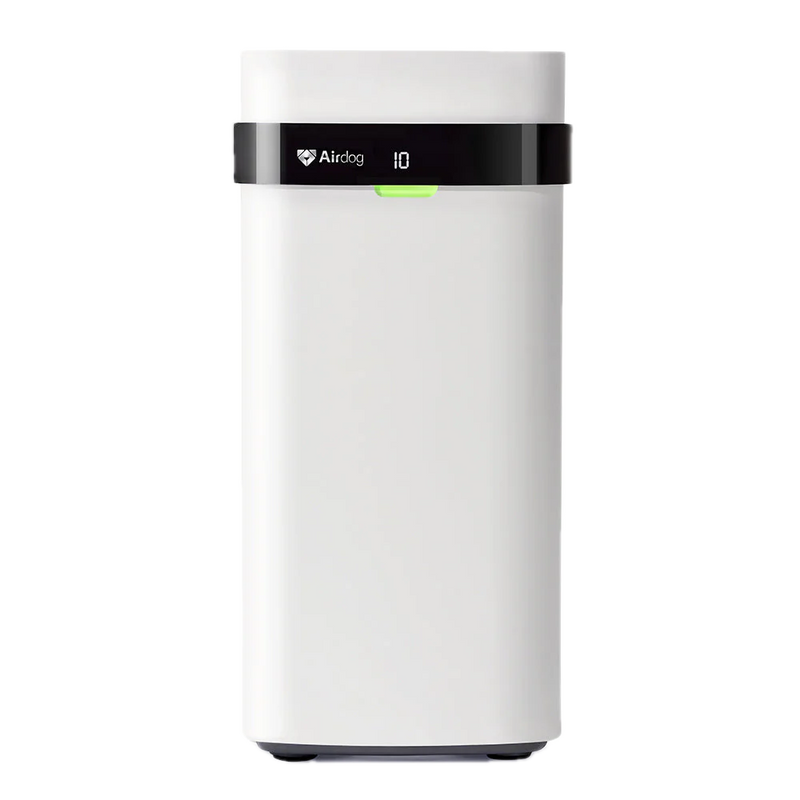Have you considered the invisible culprits in your home that might be undermining your health and comfort? The air inside your living spaces, which you breathe daily, might not be as clean as you think. Dust does more than just settle on surfaces; it compromises air quality, potentially triggering allergies and respiratory issues. This article explores effective strategies to remove dust from the air, blending modern technology with natural methods. With a deeper understanding of what dust comprises and its sources, you can embark on a targeted approach to ensure the air in your home remains clean and healthy.
Understanding Dust and Its Sources
Dust is made up of various particles that enter our homes. Though it may seem harmless, it impacts both the cleanliness of our spaces and our health. Let’s break down what dust consists of and identify the main sources contributing to its buildup indoors.
The Composition of Dust
Dust is not a singular substance but a mosaic of various particles, each with its own origin and implications for indoor air quality. Among these constituents are:
-
Pollen: Seasonal allergies often find their roots in these microscopic particles that invade our homes from the outside.
-
Mold Spores: Thriving in damp environments, these contribute to indoor air quality concerns, particularly for those with respiratory sensitivities.
-
Fibers: Textiles and upholstered furniture shed fibers that add to the dust mix.
-
Skin Cells: Humans and pets alike shed skin cells, contributing significantly to household dust.
Understanding the diverse nature of dust is crucial for targeting and eliminating these particles from our indoor air.
Common Sources of Indoor Dust
Identifying the primary sources of dust within our homes offers the first step towards mitigating its presence. Key contributors include:
-
Outdoor Air Infiltration: Every time windows or doors open, outdoor air carries pollen, mold spores, and other particulates into our homes.
-
Human and Pet Dander: Our bodies and our pets continuously shed skin cells that accumulate as dust.
-
Disintegration of Textiles and Building Materials: Carpets, curtains, and even building materials slowly degrade over time, releasing fine particles into the air.
Recognizing these sources empowers us to adopt targeted strategies, from enhancing ventilation to regular cleaning, aimed at reducing dust accumulation.
Health Implications of Indoor Dust
The significance of maintaining low dust levels indoors extends beyond cleanliness. Studies and expert opinions underscore the potential health implications of dust:
-
Allergies and Respiratory Issues: Dust mites, a common component of household dust, are notorious for triggering allergies and exacerbating asthma symptoms.
-
Compromised Air Quality: The presence of mold spores and chemical residues within dust can degrade indoor air quality, posing long-term health risks.
Addressing dust at its sources not only contributes to a cleaner home but also to a healthier living environment, safeguarding against allergies, respiratory conditions, and other health concerns.
Mechanical Filtration and TPA Filters
When it comes to cleaning indoor air, mechanical filtration stands as one of the most effective methods, particularly in the fight against dust. At the forefront of this technology is Airdog’s advanced TPA (Two-pole Active Filtration Technology®) filters. These systems work to trap airborne dust particles and other pollutants, creating a cleaner, healthier indoor environment. Let’s explore how these filters work, their unmatched efficiency in removing dust, and the importance of regular maintenance to keep them performing at their best.
The Principle of Mechanical Filtration
Mechanical filtration operates on a straightforward yet effective principle: air is forced through a fine mesh that traps harmful airborne particles such as dust, pollen, mold spores, and bacteria. This process relies on three key mechanisms:
-
Interception: Larger particles are trapped as they pass directly through the filter fibers.
-
Impaction: Medium-sized particles collide with the fibers and become stuck.
-
Diffusion: The smallest particles, often those most penetrating like viruses or smoke, zigzag in the air stream and adhere to fibers.
Airdog’s TPA filters utilize this mechanical filtration principle to capture harmful particles and keep your indoor air clean.
TPA Filtration: Efficiency Unmatched
Air Dog’s TPA technology is highly efficient, capturing a wide range of pollutants, including allergens like dust, pet dander, and pollen, as well as microscopic particles such as mold spores and bacteria. TPA filters are designed to offer unparalleled air purification efficiency, ensuring that the air in your home is fresh and free from harmful contaminants.
This level of efficiency is particularly important for:
-
Removing allergens: Reducing allergy symptoms by capturing dust, pollen, and pet dander.
-
Trapping microscopic pollutants: Effectively removing mold spores and bacteria to enhance indoor air quality.
With TPA filtration, you can trust that your air is being purified to the highest standard.
Easy Maintenance: Simply Wash Your Filters
One of the standout features of Airdog's TPA filters is that they are washable. Unlike traditional filters that require replacement, you can easily clean and maintain your TPA filters to ensure continued efficiency. Regular washing helps to:
-
Maintain optimal air purification: Clean filters will continue trapping particles effectively.
-
Save on replacements: No need to purchase new filters—simply wash and reuse them.
To maintain peak performance, it’s important to wash your filters according to the manufacturer’s instructions and keep them free from debris.
Effectiveness Across Different Room Sizes
The effectiveness of air purifiers equipped with TPA filters varies with room size, necessitating careful consideration when selecting a unit:
-
Small rooms: Compact air purifiers can efficiently cycle and clean the air several times per hour.
-
Large spaces: More powerful units or multiple purifiers may be required to achieve the same level of air purity.
Choosing the right air purifier for your room size ensures optimal dust removal, making TPA technology a versatile solution for any indoor space.
Natural Air Purification Methods
While mechanical filters play a significant role, natural air purification methods offer a sustainable and often aesthetically pleasing alternative to removing dust.
Indoor Plants: Nature's Air Purifiers
Research highlighted on BBC extols the virtues of indoor plants, not just as decorative elements but as vital players in improving indoor air quality. Plants such as spider plants and peace lilies go beyond mere aesthetics; they absorb dust and other pollutants They also emit clean oxygen, offering a natural solution to air purification. Here's how they contribute:
-
Pollutant Absorption: Plants absorb harmful toxins through their leaves and roots, a process that can mitigate the effects of volatile organic compounds (VOCs) found in home furnishings and cleaning products.
-
Oxygen Production: Through photosynthesis, plants convert carbon dioxide into oxygen, enhancing the air quality and making breathing easier for everyone in the home.
-
Humidity Regulation: Plants release water vapor during transpiration, helping to maintain optimal indoor humidity levels, which can be beneficial for respiratory health.
The Importance of Natural Ventilation
Allowing a natural exchange of indoor and outdoor air plays a crucial role in maintaining a healthy indoor environment. However, it's paramount to balance this with the awareness of outdoor pollution levels:
-
Exchange of Air: Opening windows and doors, when weather and pollution levels permit, can help remove stale indoor air and reduce the concentration of indoor pollutants.
-
Consideration of Outdoor Pollution: It's important to stay informed about the outdoor air quality index (AQI) and limit the opening of windows during high pollution days to avoid introducing additional pollutants indoors.
Reducing Dust Generation at the Source
Effective dust management begins by tackling the issue directly at its source. By incorporating simple yet strategic measures into our daily routines, we can significantly minimize the amount of dust generated indoors, leading to a cleaner, healthier living environment.
Utilize Doormats and Remove Shoes Indoors
-
Doormats: Place high-quality doormats at every entrance to your home. These act as the first line of defense, trapping dirt and particles from the soles of shoes before they enter your living space.
-
Shoe-Free Zone: Implement a policy of removing shoes upon entering the home. This practice prevents the tracking in of dust, pollen, and other outdoor contaminants.
Regular Cleaning of Textiles
-
Vacuum Regularly: Use a vacuum cleaner with a filter to clean carpets, rugs, and upholstered furniture at least once a week to remove dust and allergens.
-
Wash Bedding Weekly: Bed linens accumulate skin flakes, dust, and dust mites. Washing them in hot water weekly can mitigate this issue.
-
Curtains and Drapes: Do not overlook window treatments. Clean or vacuum curtains and drapes regularly to prevent dust accumulation.
Control Humidity to Prevent Dust Mite Proliferation
-
Maintain Optimal Humidity: Keep indoor humidity levels between 30% and 50%. Dust mites thrive in higher humidity, so using dehumidifiers in damp areas can inhibit their growth.
-
Use Allergen-Proof Covers: Encase mattresses, pillows, and box springs in allergen-proof covers to create a barrier against dust mites.
Declutter to Reduce Dust Collection Surfaces
-
Minimize Surfaces: Excess clutter provides additional surfaces for dust to settle on. Regular decluttering can significantly reduce dust accumulation.
-
Strategic Storage: Store books, ornaments, and clothing in closed cabinets or containers to shield them from dust.
Choose Cleaning Products Wisely
-
Avoid Aerosol Sprays: Opt for non-aerosol cleaning products. Aerosols can suspend dust particles in the air, making them more likely to be inhaled.
-
Damp Dusting: Use a damp cloth or microfiber mop for dusting. This method captures dust instead of dispersing it back into the air.
By incorporating these strategies into our cleaning routines, we not only reduce the amount of dust generated but also create a healthier living space free from airborne allergens. Regular adherence to these practices can markedly improve indoor air quality, offering a more comfortable and cleaner home environment.
Conclusion
Removing dust from the air is key to maintaining a clean, healthy indoor environment. Dust comes from various sources, such as outdoor particles, pet dander, skin cells, and even household activities. While natural purification methods like ventilation and houseplants can help, they often aren’t enough to fully cleanse the air.
That’s where advanced filtration systems like Airdog’s patented TPA filtration come in. By trapping harmful particles and dust at the microscopic level, air purifiers play a significant role in purifying your indoor air. Regularly washing your filters and using the right-sized unit for your space ensures continuous air quality. Combined with a well-rounded approach, including proper cleaning habits and ventilation, you can significantly reduce dust and allergens in your home, fostering a healthier and more comfortable living environment.





